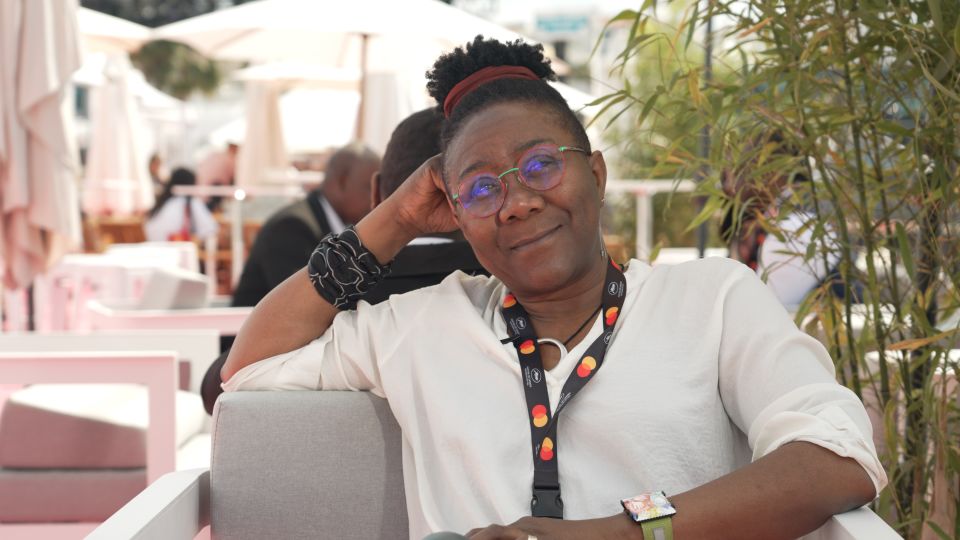Digital technology may have led to the decline of hand-drawn animation, but it still required legions of creatives and technicians to feed into the process. Now some fear that artificial intelligence (AI) could push the human touch further still out of the equation.
But in Africa, animation professionals see AI as a means to unlock new creative possibilities, while getting their projects off the ground with greater ease.
Stuart Forrest, CEO of BAFTA and Emmy-winning Triggerfish Animation Studio, which has its headquarters in South Africa, is one of them. “Africa has quite a unique position globally,” he told CNN. “Of the 1.4 billion people that live on the continent, there’s such a tiny amount that are actually active in the animation industry.”
Given the limited number of professional animators, Forrest believes that by integrating AI, some creatives will have a route to realize their projects for the first time – “that’s really exciting for the continent.”
Ebele Okoye, an award-winning Nigerian filmmaker affectionately known as the “Mother of African animation,” also sees plenty of upsides.
“We now have the opportunity to tell our stories without having to wait for somebody to give us $20 million,” she told CNN during the Cannes Film Festival in May, where she hosted a masterclass on AI in animation at the Pavilion Afriques.
A still from “Kizazi Moto: Generation Fire,” a series produced by Triggerfish Animation Studios that debuted on Disney+ in 2023. The series did not use AI as part of its production, but Triggerfish CEO believes the technology has the potential to help animators in Africa. – The Walt Disney Company
Africa’s animation sector was valued at $13.3 billion in one 2023 report but historically, there has been a lack of funding for African animated projects, said Forrest. “There’s a general rule that African stories don’t generate income. But the African stories that are made are such low budget that, yes, they don’t generate income. So it’s a self-fulfilling thing,” he explained.
Soon, he projects, a feature film that might have cost $10-20 million to make, may cost $50,000 with AI, and require just two or three creatives.
“You’re going to see this flood of new stories that have never been heard before, from countries that no one would ever invest (in),” he added.
“Eventually the playing field between Hollywood and Kinshasa (in the Democratic Republic of Congo) will be levelled in terms of the quality of storytelling.”
Is AI coming for your job?
There are many outstanding questions. For one: What might AI do to the jobs market?
Opinions differ. “You’re going to empower people working for you,” Okoye said. “You’re not going to replace them; you’re going to make their jobs easier.”
But that’s assuming you have a job in the first place. AI is already taking on many mundane, repetitive tasks – tasks that might be done by entry level staff and trainees.
“If those jobs then become obsolete, at some point this makes the industry a bit elitist … you don’t have the same entry window that you do now,” argued Masilakhe Njomane, a junior research fellow at the South African Cultural Observatory and co-author of a recent report on AI’s impact on South Africa’s creative industries.
“In an economy like South Africa it’s detrimental, as we already have a lot of trouble with job security as a whole, especially in the creative and cultural industry,” she added.

A still from “The Legacy of Rubies” (2015), an award-winning short film by Ebele Okoye. The film did not use AI in its production. – courtesy Ebele Okoye
While Triggerfish has not used AI-generated art, Forrest said, employees have used GitHub Copilot, an AI-powered coding assistant, to help them generate code for the past couple of years, noticeably speeding up their output.
He conceded “AI initially might eliminate some roles, but it will enable other roles.” On the other hand, Njomane pointed to AI creating opportunities for independent studios to play a bigger role in content creation.
The ethical and legal debate
Aside from the impact on jobs, most reservations with integrating AI – particularly generative AI – in the creative industries involve ethics and the law.
There is an ongoing murkiness surrounding where and how some AI companies acquire the datasets used to train algorithms which generate imagery. AI companies have been hit with dozens of lawsuits, largely based on copyright infringement. Just last month, Midjourney was sued by Disney and Universal, who alleged the generative AI company trained its model on their intellectual property, and generated images in violation of copyright law.
In July, the European Union proposed new rules that would force companies to make publicly available summaries of the content used to train their algorithms. In January the US Copyright Office concluded that the output of generative AI could be copyright protected, but only when a human had contributed “sufficient expressive elements” – and that inputting prompts alone did not meet the criteria. The African Union is a few paces behind forming concrete policy, but the issue featured prominently its 2024 AI strategy report.

Triggerfish Animation Studios produced “Aau’s Song,” the final episode of volume two of Disney+ series “Star Wars: Visions.” The short, which did not employ AI in its production, is infused with imagery harking back to South Africa, where Triggerfish has its headquarters. – Lucasfilm
A creative with no copyright on their work has few routes to make money from it. Okoye believes, for this reason and more, African animators should avoid web browser-based generative AIs and instead use AI in a localized workflow.
Okoye uses software ComfyUI, into which she has fed drawings of her characters in different poses. “You can train an AI model based on your character, so that the moment you connect this model to your local workflow, you say exactly what you want your character to do and it’s doing it,” she explained. “You just get back what you gave it – and it’s your IP (intellectual property).”
Forrest says Triggerfish is looking to develop an ethical “AI-assisted pipeline,” though he can still find some sympathy for algorithms.
“If we have to brutally honest with ourselves, we were inspired by Disney, Pixar,” he said. “I think art is always assimilating – I mean, Raphael was assimilating Michelangelo and Leonardo. It’s always been about looking at what people are doing and saying, ‘How can I being my perspective to this?’
“It’s acceptable if humans do it. But the question is how acceptable is it when it’s done by machines? Ultimately, I think the controversy will wear off.”
Busting bias
Having creative control over your data inputs could have other benefits: namely, helping eliminate bias.
Racial bias in AIs is well documented, from facial recognition technology recording much higher error rates among dark-skinned people than light-skinned, to large language models perpetuating negative stereotypes against speakers of African American English. Such “techno-racism” extends into generative AI: artist Stephanie Dinkins even produced an exhibition out of AI’s inability to accurately depict Black women.
Okoye says in the past, some AIs have generated either generic or inaccurate imagery when prompted to create African characters. “The only solution is to go local, create your characters, train your own model,” she reiterated.
As for why AIs fall short, Forrest said that “there is so little existing African content – especially in animation – that there is a lot less for (an AI) to understand.”
Njomane pointed to AIs performing better in English and other Western languages, adding many often generate generic imagery of Africa. “It’s not being programmed with (Africans) in mind or even consulting them at all. And that’s a huge problem.”

A still from “Anna Blume” (2010), a short film by Ebele Okoye visualizing “An Anna Blume” (T”o Eve Blossom”), a 1919 poem by German Dadaist Kurt Schwitters. The project did not involve the use of AI. – courtesy Ebele Okoye
Okoye outlined a dream scenario in which development funds or angel investors back studios to create diverse African characters and culturally specific assets to train an AI model. That would generate a library of accurate, free-to-access imagery, which can serve as a foundation for animators to build on in a way that allows them to assert their copyright.
Amid a boom in African animation, animators will need all the tools they can get, as studios look to replicate the success of series like “Iwájú” and “Iyanu” – Nigerian projects streaming on Disney+ and HBO Max respectively, signposting growing international appetite for Afro-centric storytelling.
Despite the ongoing ethical kinks, Okoye remains optimistic. But as someone who once worked as a typesetter alongside colleagues worried for their careers with the arrival of the personal computer, she also understands people’s concerns.
“Coming from (being) a typesetter to somebody who’s training AI models – how beautiful,” she said.
“What a great time to be alive.”
For more CNN news and newsletters create an account at CNN.com

